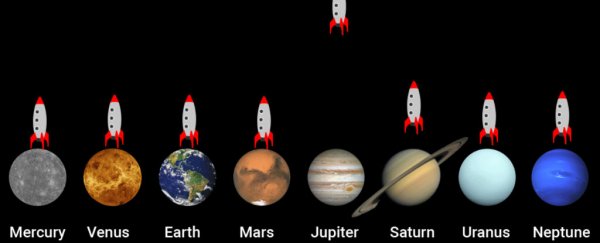Elon Musk's private rocket company SpaceX announced Monday that it plans to launch two paying customers around the Moon in late 2018. How hard will that be to accomplish, exactly?
Gravity makes it possible for us to live on Earth, but it also makes it pretty hard to leave.
Satellites fight gravity by going just fast enough to free-fall around the planet indefinitely, like the International Space Station, with many travelling at speeds of more than 17,500 mph (28,200 km/h).
But if you want to leave this planet, you have to go faster. This speed is called the escape velocity.
It takes a lot of fuel to reach that speed, which is why early rockets, like Apollo's Saturn V, were so big: They had to carry enough fuel to get to the Moon.
SpaceX's rockets are a little bit smaller than the Saturn V, but they will have to go even further to take humans around the moon and back.
Musk has got to be relieved he's not launching from Jupiter yet. Because other planets in our Solar System have different gravitational strength, they each have different escape velocities.
On Jupiter, you'd have to reach an unthinkable 135,000 mph (217,000 km/h) because the planet is twice as massive as all the other planets put together. That high speed is the only way you could launch a rocket into space and not have it get pulled back.
Here's how fast you'd have to go to leave every planet in the solar system - in one tidy, animated GIF:

This article was originally published by Business Insider.
